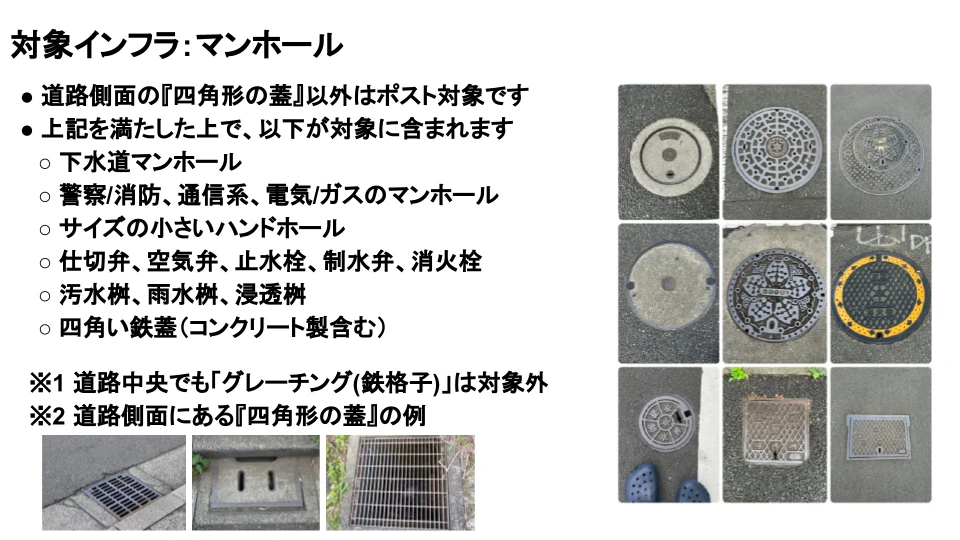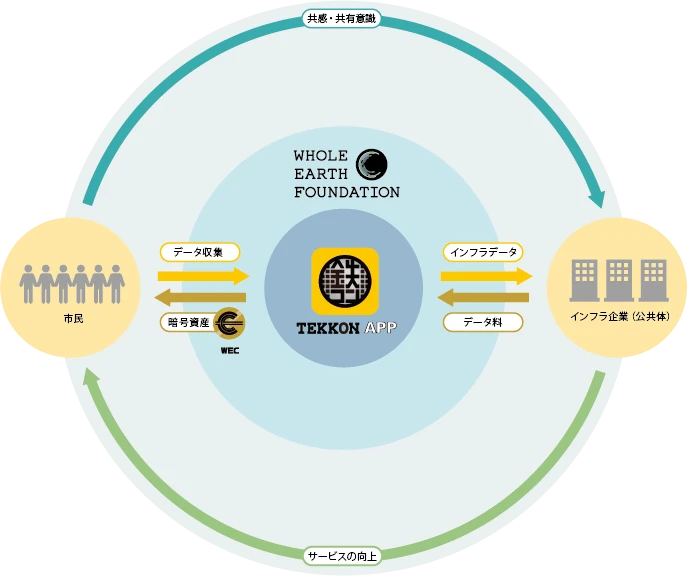Recently, a Web3 product called TEKKON has caught the attention of the BBC. Multiple channels in Asia have reported on this product, which is a Web3 project that has not received much attention from the crypto world, in a surprising way.

TEKKON is a popular Web3 product in Japan. The product is operated by the Whole Earth Foundation and has its own WEC token. Currently, it has over 130,000 users worldwide.
Socially Contributory Web3 Game
In the introduction on TEKKON’s Twitter, this project uses an interesting concept to define itself – a socially contributory Web3 game. How does this project contribute to society?
When players take photos of eligible infrastructure in real-world cities, they can receive game rewards, which are distributed in the game’s native token, WEC.
Specifically, players need to take photos of damaged infrastructure (such as utility poles). The project will then share this infrastructure information with local government authorities and infrastructure companies in your city. This helps relevant parties obtain information about damaged infrastructure and allows them to repair it in a timely manner.
When players create a TEKKON account, they will receive a free pet dog NFT. The game rewards can be used to help the dog grow, and the game rewards can also be exchanged for LineLianGuaiy points. LineLianGuaiy is a payment feature supported by a popular SMS app in Japan, and each LineLianGuaiy point can be used to deduct 1 yen during payment.

In addition to taking photos themselves, there are other ways to earn rewards. In order to filter out invalid data, photos of infrastructure uploaded by players need to be reviewed by other players, and the players who conduct the review can receive game rewards.
Impacting the Real World – Is the Vision Too Idealistic?
Unlike previous Web3 applications where the value is entirely on the blockchain, TEKKON is a Web3 application that impacts the real world. The team believes that this application has a practical and positive impact on society.
For example, there are about 15 million sewage wells in Japan, and about 3 million of them have exceeded their service life. However, the maintenance department cannot keep up with the latest updates of these sewage wells in a timely manner.
With the help of the TEKKON application, citizens were able to capture photos of all 10,500 wellheads in Shibuya, Tokyo within just three days using their smartphones. If this pace continues, it will be possible to capture photos of all 15 million cases. This allows for timely maintenance of infrastructure based on the latest updates. TEKKON estimates that such timely maintenance can reduce facility update investment by 30% to 40%.
Looking ahead, through the daily activities of TEKKON players, TEKKON will have various types of infrastructure data from around the world. The collected data will generate valuable value for global infrastructure maintenance.
In this simple economic model, how does TEKKON generate revenue to support the distribution of rewards to players?
The data obtained by TEKKON allows infrastructure companies to optimize their maintenance efficiency, so this data is valuable to infrastructure companies, and TEKKON sells it to them. The amount paid by infrastructure companies is the source of TEKKON’s income.
For this reason, they have also made rough calculations: There are approximately 7.9 billion people in the world, and approximately 3 billion households. Assuming that the infrastructure-related expenses per household per year are 50,000 yen, the annual scale of funds in this field is approximately 150 trillion yen. If 10% of this investment in funds can be used to improve infrastructure maintenance efficiency through the wide adoption of TEKKON in the future, the potential scale of the economic system constructed by TEKKON will be approximately 15 trillion yen.
But is TEKKON’s expectation filled with utopian fantasies from the beginning? Based on the current exchange rate, 50,000 yen is approximately 350 US dollars. If such a scale of value investment is used as the estimation benchmark, does it belong to the unrealistic idea of wealthy countries?
UN data shows that currently 10% of the world’s population (700 million people) still live in extreme poverty, with less than $1.90 in daily living expenses. Even employed people, 8% of them and their families still live in extreme poverty.
Even in regions that are not poor, there are many areas with insufficient infrastructure investment. The benchmark for household infrastructure expenses may be too idealistic. Due to fiscal, policy, administrative process, judicial, and other reasons, developing countries have a scarcity of infrastructure investment. The theoretical market scale of TEKKON is far from its estimation.
WEC Ecosystem
WEC is the native token of TEKKON. According to official descriptions, this ecosystem consists of four roles: citizens, Whole Earth Foundation, infrastructure companies (or public institutions), and other companies.
WEC tokens were first issued on Ethereum and migrated to Solana after July 2022. Solana was founded by former engineers from Qualcomm, Intel, and Dropbox at the end of 2017. It is a single-chain delegated proof-of-stake protocol that focuses on providing scalability without sacrificing decentralization or security. The core of Solana’s scalability solution is a decentralized clock called “Proof of History (PoH)” that aims to solve the problem of time in distributed networks without a single trusted time source. By using verifiable delay functions, PoH allows each node to locally generate timestamps using SHA256 calculations. This eliminates the need to broadcast timestamps across the entire network, improving overall network efficiency. SOL is the native token of the Solana blockchain. Solana uses a delegated proof-of-stake consensus algorithm to incentivize token holders to validate transactions. As part of Solana’s security design, all fees are paid in SOL and burned, reducing the total supply. This deflationary SOL mechanism incentivizes more token holders to participate, thus increasing network security. Learn more about Solana.
However, its tokenomics design is different from common cryptocurrency projects. At the time of issuance, the total supply of WEC is fixed at 300 million. However, after migrating to Solana, it has been changed to a variable quantity without clear explanation. The official statement says, “The exact quantity will be determined by the foundation based on the future usage of the platform, the need to maintain business operations, and other factors.”
TEKKON embeds a wallet system within the application, but its design is relatively closed. The game has two types of points: reward points and binding points. Reward points can only be used for consumption within the game. If users transfer them to other EOA wallets within the application, they will no longer be exchangeable for WEC tokens. Currently, WEC has planned a staking scheme, but the specific rules are still under discussion.
From the perspective of its mechanism design, this project’s model appears more closed and centrally operated. However, its unique real-world utility has indeed had a significant impact, perhaps paving a new path for cryptocurrency entrepreneurship. Where will TEKKON and WEC go in the future?
Like what you're reading? Subscribe to our top stories.
We will continue to update Gambling Chain; if you have any questions or suggestions, please contact us!


